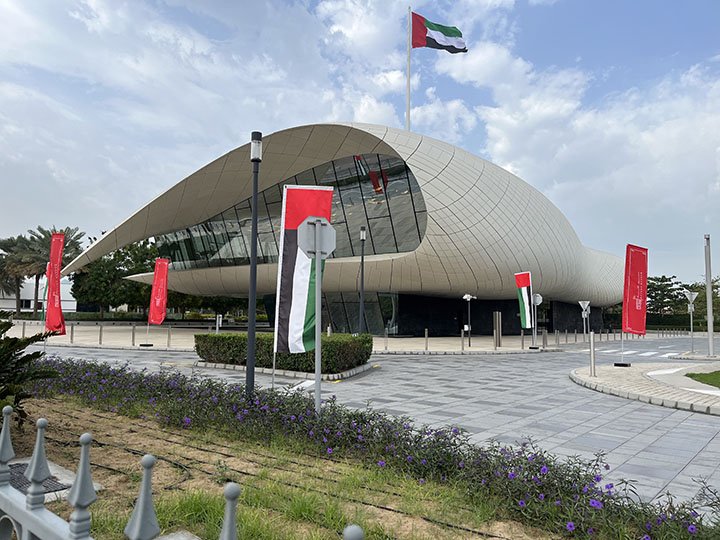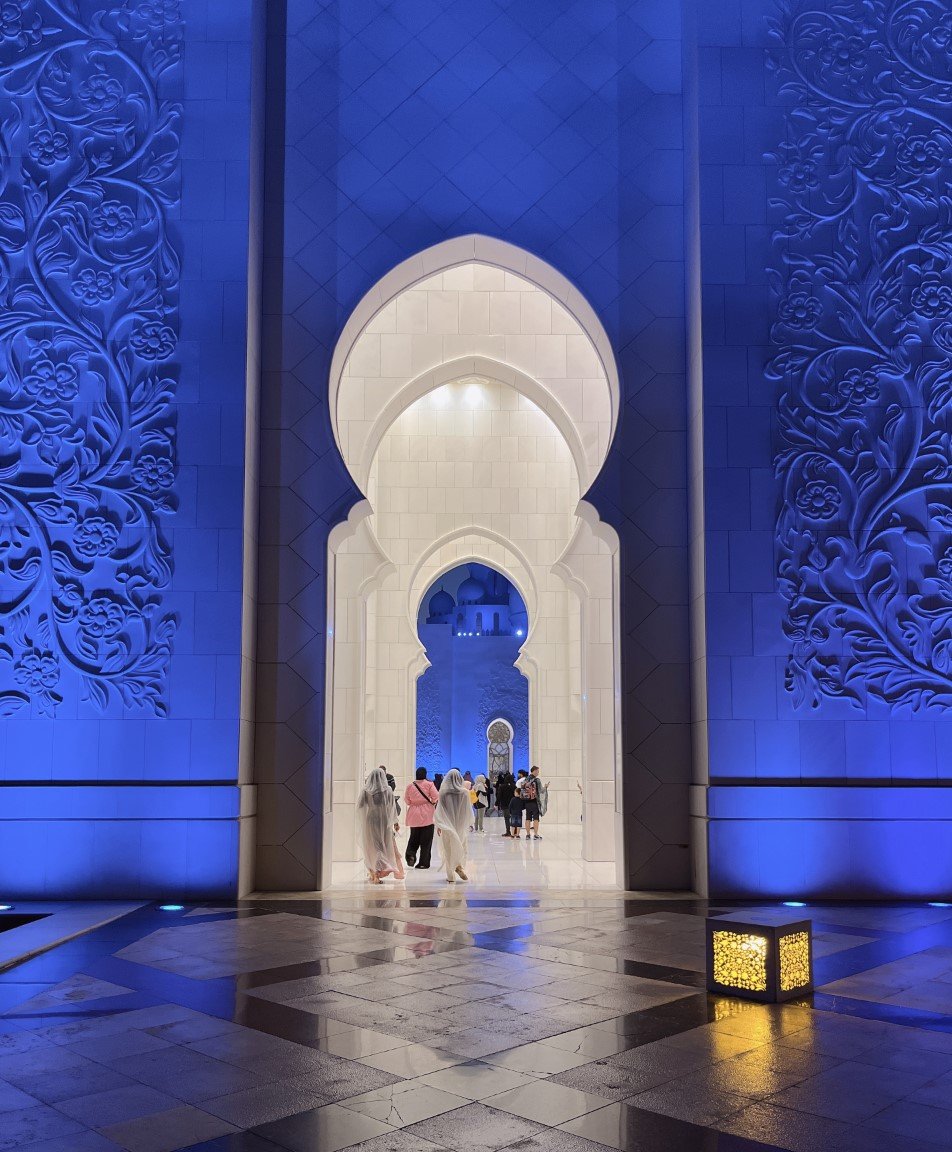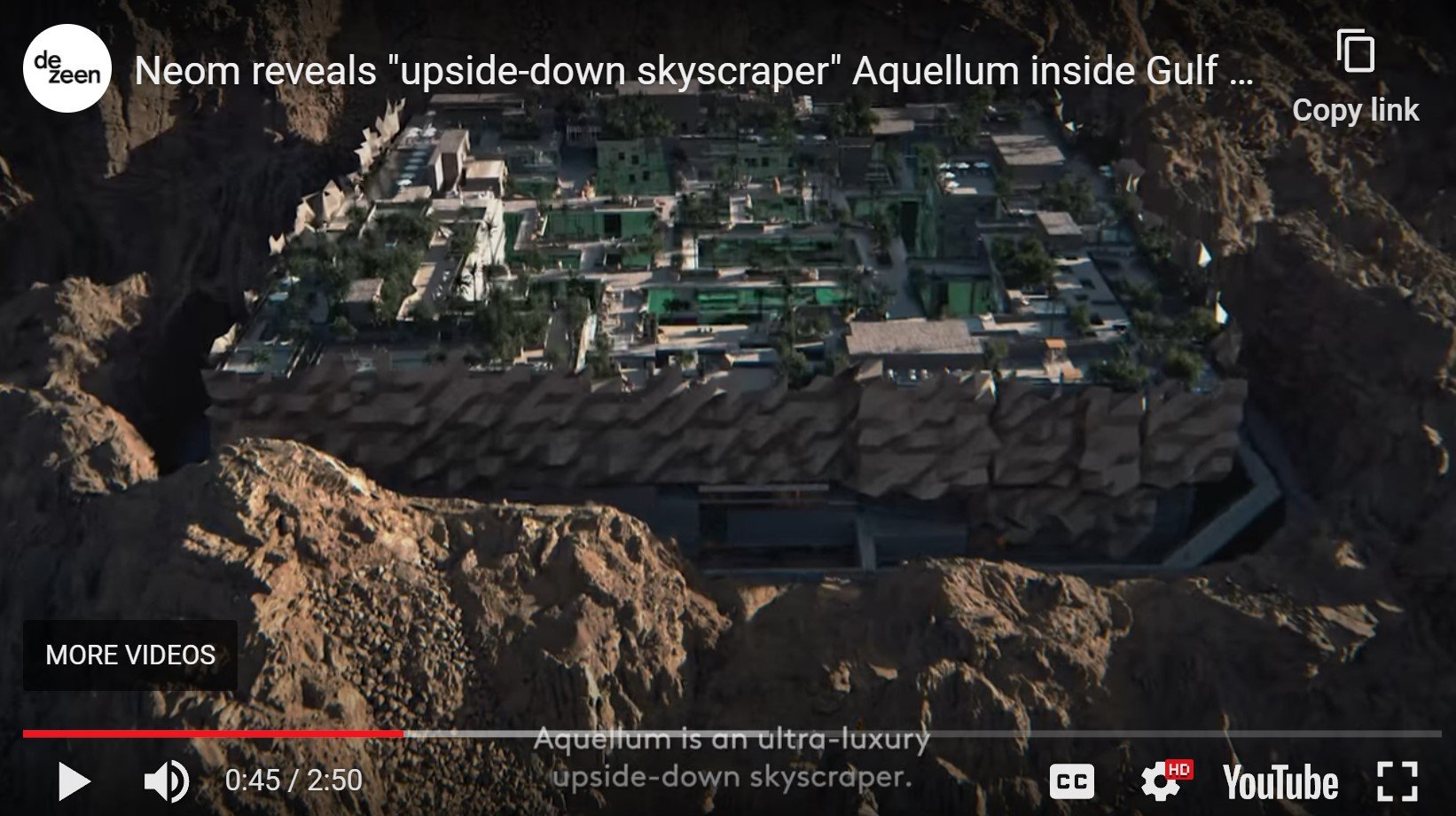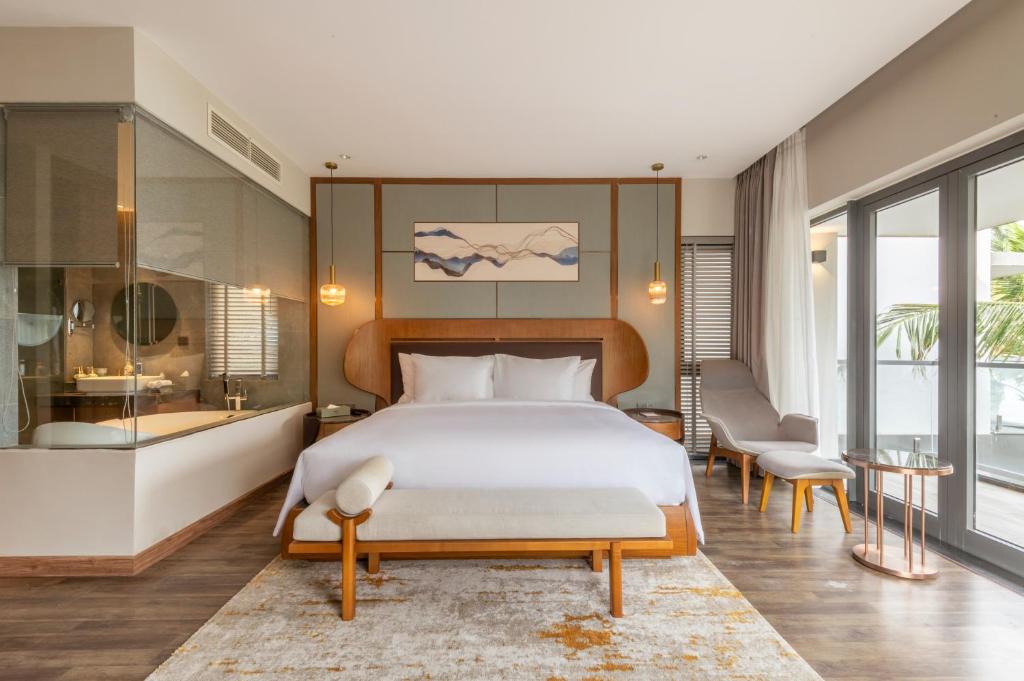Introduction
Upon our recent visit to the Etihad Museum, located in the heart of Dubai, we were initially captivated by its architectural allure. This iconic museum, having its unique futuristic structure, promises an intriguing journey into the rich tapestry of Dubai’s development journey. From a distance, its distinctive form beckoned, sparking a curiosity that led us through its doors. This critique aims to navigate through our experience, highlighting both the architectural marvels and the areas where it seemingly fell short, offering a comprehensive perspective to our fellow enthusiasts and potential visitors.

First Impressions and Exterior Critique
As we approached the Etihad Museum, the first element that caught our attention was the water feature encircling the building. This architectural decision, intended to enhance the building’s form and presence, unfortunately, did not meet its potential. The water feature’s integration seemed weak, failing to effectively delineate the main structure or augment its architectural significance. Furthermore, the transition area leading to the main entrance was lacking in detail, rendering it insufficient in distinguishing the building’s entrance from its surroundings. This initial encounter set a tone of anticipation mixed with a hint of skepticism as we moved toward the interior, eager to uncover more.

Interior Exploration
Stepping inside, the museum greeted us with a reception area adjacent to what resembled amphitheater seating. This space, devoid of a clear functional purpose, felt like a missed opportunity to engage visitors or introduce them to the museum’s thematic journey. Ascending to the upper floor, we found it disconnected from the museum’s core functions. A small restaurant and expansive, underutilized spaces filled this area, isolated due to their lack of accessibility to the museum’s main attractions. This disconnection prompted reflections on the potential of these spaces, had they been integrated with the museum’s narrative flow.





Underground Exhibition Experience
The descent into the underground exhibition marked a turning point in our visit. The sunlight filtering through the sunken garden into the subterranean space was a breath of fresh air, both literally and metaphorically. This clever design choice brought a natural, calming element to the underground area, enhancing the overall ambiance. The exhibition itself was a testament to modern technology, with high-tech display systems and an automated theater that made the history of Dubai accessible and engaging. Interacting with these displays was as intuitive as using a smartphone, a highlight of our visit that showcased the museum’s commitment to innovative presentation methods.
However, the placement of the sunken garden raised questions. Situated on one side, it seemed isolated from the main flow of the museum, lacking a clear purpose that would encourage interaction or engagement. The garden was a level below the main circulation corridor, creating a physical and conceptual separation from the exhibition journey. This disconnection underscored a recurring theme of missed opportunities in spatial utilization and visitor engagement.









Navigational Flaws and Conclusion of the Visit
The conclusion of our underground journey brought us to an unexpected point: the need to retrace our steps over 50 meters to exit. This circular path, leading back to where we began, detracted from the experience. The anticipation of discovering something new at every turn was replaced by the monotony of a familiar corridor. Exiting the museum, the landscape that had once sparked joy from a distance fell short of expectations, leaving a lingering feeling of unfulfilled potential.

Overall Impression and Conclusion
The Etihad Museum, with its striking form and promise of a journey through Dubai’s history, captures the imagination from afar. Yet, the physical experience within its walls reveals a narrative of contrasts. While its underground exhibition and technological innovations offer glimpses into a future-oriented approach to museum design, the overall visitor journey is hampered by spatial disconnects and a lack of cohesive storytelling through architecture. The museum’s exterior and interior elements, though architecturally ambitious, struggle to harmonize, impacting the sequential flow and engagement of the space. Despite these critiques, the museum’s dedication to showcasing Dubai’s history through advanced technology and interactive displays is commendable, offering a foundation upon which to build and refine the visitor experience.




